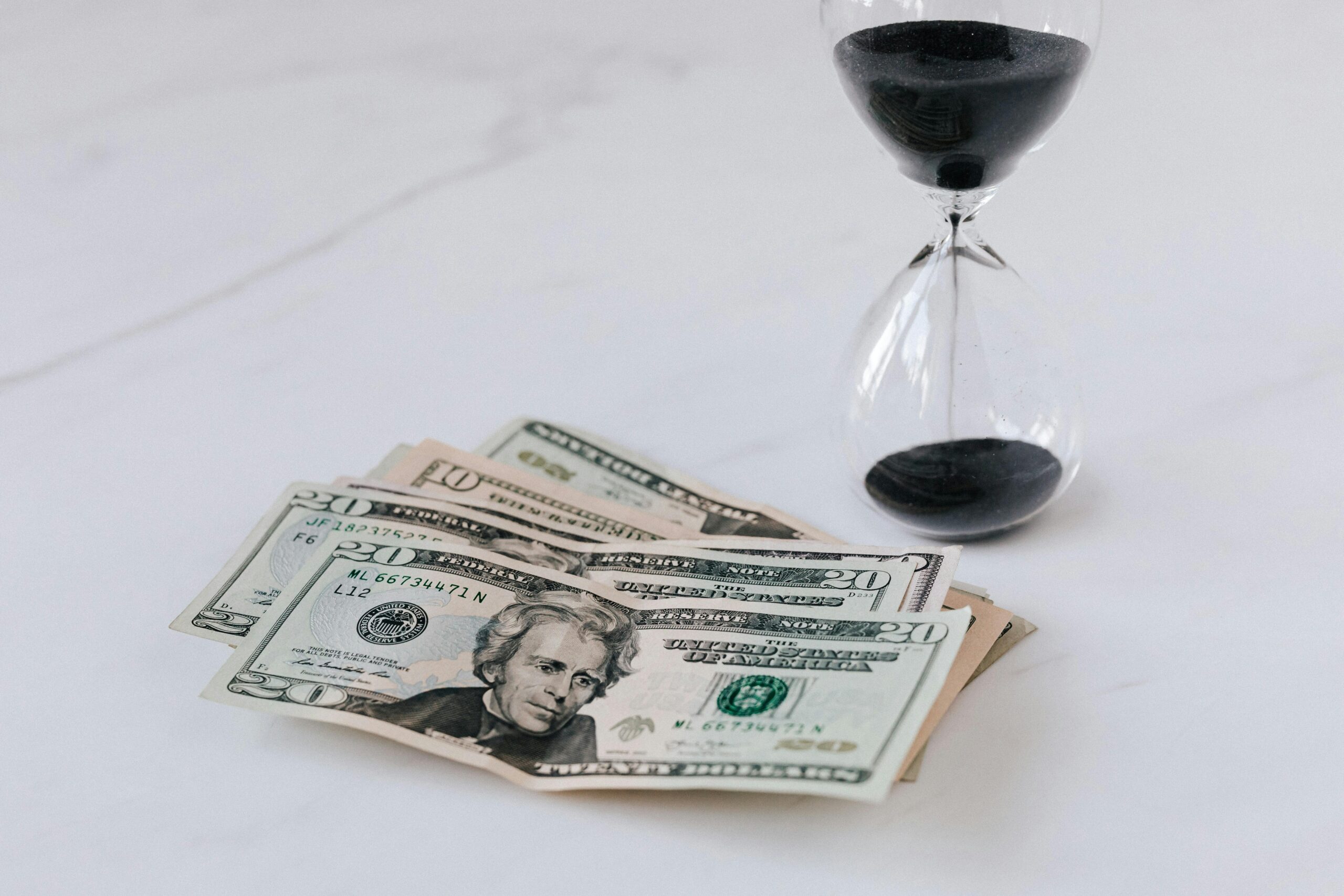Every day, we make thousands of decisions—from what to wear to which emails deserve our immediate attention. This constant decision-making drains our mental energy and affects our ability to think clearly.
Decision fatigue is a psychological phenomenon that occurs when the quality of our decisions deteriorates after making many choices throughout the day. Unlike physical fatigue, this mental exhaustion creeps up silently, impacting everything from our professional performance to our personal relationships. Understanding and managing decision fatigue has become essential in our information-saturated world where choices multiply exponentially.
The good news? By recognizing the signs of decision fatigue and implementing strategic simplification techniques, you can reclaim your mental clarity and boost your productivity significantly. This comprehensive guide will walk you through the science behind decision fatigue and provide actionable strategies to simplify your life for optimal performance.
🧠 Understanding the Science Behind Decision Fatigue
Decision fatigue operates on a fundamental principle: our willpower and decision-making capacity function like a muscle that becomes tired with use. Research conducted by social psychologist Roy Baumeister revealed that making decisions depletes the same mental resources we use for self-control and active initiative.
When we make decisions continuously, our brain consumes glucose at a faster rate. As glucose levels drop, our prefrontal cortex—the brain region responsible for decision-making—struggles to function efficiently. This biological reality explains why we often make poor choices late in the day or after extended periods of mental exertion.
Studies have shown that judges are more likely to grant parole in the morning than later in the day, with approval rates dropping from 65% to nearly zero as decision fatigue sets in. This striking example demonstrates how even trained professionals with significant responsibility fall victim to mental exhaustion.
The Hidden Cost of Too Many Choices
Paradoxically, having more options doesn’t necessarily lead to better decisions or greater satisfaction. Psychologist Barry Schwartz coined the term “paradox of choice” to describe how an abundance of options can lead to anxiety, decision paralysis, and decreased satisfaction with our final choices.
Modern life presents us with an overwhelming array of choices that previous generations never faced. From streaming platforms with thousands of shows to grocery stores with fifty types of cereal, we’re constantly forced to evaluate options and make selections. Each choice, no matter how small, extracts a toll on our mental resources.
🎯 Recognizing the Warning Signs of Decision Fatigue
Identifying decision fatigue in yourself is the first step toward managing it effectively. The symptoms often manifest subtly before becoming obvious problems that impact your daily functioning.
Common indicators include procrastination on important tasks, impulsive decisions you later regret, feeling overwhelmed by simple choices, increased irritability, and a tendency to avoid making decisions altogether. You might find yourself saying “whatever” or “I don’t care” more frequently when asked to choose between options.
Physical symptoms can accompany mental exhaustion: headaches, difficulty concentrating, reduced creativity, and a general sense of mental fog. When decision fatigue sets in, people often default to the easiest option rather than the best one, or they maintain the status quo simply to avoid the mental effort of change.
💡 Strategic Simplification: Your Path to Mental Clarity
Simplifying your life doesn’t mean eliminating all choices or living a minimalist existence. Rather, it involves strategically reducing unnecessary decisions so you can preserve mental energy for choices that truly matter. This approach requires intentional design of your daily routines and environment.
Automate Your Morning Routine
Your first hours awake set the tone for your entire day. By establishing consistent morning rituals that require minimal decision-making, you conserve precious mental energy for more important tasks later.
Consider creating a uniform wardrobe or planning your outfits the night before. Many successful people, from Steve Jobs to Mark Zuckerberg, famously wear similar clothes daily to eliminate this daily decision. You don’t need to take it that far, but even reducing your wardrobe to versatile pieces that easily mix and match can significantly decrease morning stress.
Standardize your breakfast choices by rotating between three or four nutritious options rather than deciding anew each morning. Prepare overnight oats, set up your coffee maker on a timer, or batch-prep breakfast items on weekends. The goal is making your morning flow automatically without constant micro-decisions.
Implement Decision-Making Frameworks
Creating personal rules and frameworks for recurring decisions eliminates the need to deliberate each time a similar situation arises. These mental shortcuts preserve cognitive resources while maintaining quality outcomes.
For example, you might establish rules like: “I only check email at 10 AM, 2 PM, and 4 PM,” or “I automatically decline meetings without a clear agenda.” Financial decisions benefit from frameworks too: “I don’t purchase items over $100 without sleeping on it,” or “I automatically invest 20% of any bonus or raise.”
These predetermined rules remove the burden of deciding in the moment, reducing the mental taxation of repeated similar choices throughout your day.
🗓️ Time-Blocking and Batch Processing Decisions
Rather than making decisions reactively throughout the day, batch similar decisions together and address them during designated time blocks. This approach leverages the psychological principle that our brain works more efficiently when focused on similar tasks.
Dedicate specific times for certain types of decisions. Schedule a weekly meal-planning session where you decide all meals for the upcoming week in one sitting. Set aside a monthly block for reviewing subscriptions and recurring expenses. Create a daily 15-minute slot for responding to non-urgent messages and requests.
When you batch decisions, you enter a decision-making mode that’s more efficient than constant context-switching. Your brain doesn’t need to repeatedly shift gears between different types of thinking, reducing overall mental fatigue.
The Power of Weekly Planning Sessions
A comprehensive weekly planning session serves as your strategic command center, allowing you to make dozens of decisions proactively rather than reactively. Set aside 30-60 minutes each week, preferably on Sunday evening or Monday morning, to map out your upcoming week.
During this session, review your calendar, identify priorities, schedule important tasks, plan meals, and anticipate potential challenges. By making these decisions once, you eliminate hundreds of micro-decisions throughout the week. You’ll start each day knowing exactly what needs attention rather than facing a blank slate that demands constant evaluation.
🍽️ Simplifying Daily Decisions That Drain You Most
Certain categories of decisions consume disproportionate amounts of mental energy relative to their actual importance. Identifying and streamlining these areas yields significant returns on your cognitive investment.
Meal Planning and Food Decisions
The question “What should I eat?” arises multiple times daily, creating a significant cumulative burden. Research suggests we make over 200 food-related decisions every day, most of which we don’t consciously register.
Combat this by creating a rotating menu of meals you enjoy. Many people successfully use a themed approach: Meatless Monday, Taco Tuesday, Pasta Wednesday, and so forth. This structure provides variety while eliminating the daily “what’s for dinner” debate.
Meal prep on weekends can eliminate workday food decisions entirely. Prepare components rather than complete meals for flexibility—cook proteins, chop vegetables, prepare grains—then quickly assemble meals throughout the week without thinking.
For grocery shopping, maintain a master list of staples and simply replenish these items regularly. Add specialty items only for specific recipes you’ve already planned. This systematic approach transforms shopping from an exhausting evaluation of endless options into a quick, efficient process.
Digital Decluttering for Mental Clarity
Our digital environments present constant micro-decisions that fragment our attention and deplete mental resources. Each notification, email, or app icon represents a potential decision point competing for cognitive bandwidth.
Conduct a ruthless audit of your digital subscriptions, apps, and notifications. Unsubscribe from email lists that don’t provide clear value. Delete apps you haven’t used in three months. Disable all but the most essential notifications. The goal is reducing the number of inputs demanding your attention and decision-making.
Organize your remaining digital tools intentionally. Create folders that group similar apps together. Use website blockers during focused work periods. Establish clear boundaries around when and how you engage with different platforms.
⚡ Energy Management: The Foundation of Better Decisions
Your physical and mental state dramatically influences your decision-making capacity. Managing your energy levels strategically helps maintain optimal cognitive function throughout the day.
Tackle Important Decisions During Peak Hours
Most people experience peak mental performance during specific windows—often mid-morning for many, though individual chronotypes vary. Identify your personal peak hours through self-observation, then fiercely protect this time for your most important decisions and challenging work.
Schedule routine tasks, administrative work, and less critical decisions for your lower-energy periods. Answer simple emails during afternoon lulls. Make phone calls when your energy dips. Reserve your cognitive prime time for strategic thinking, creative work, and significant decisions.
This approach ensures you’re making important choices when your mental resources are abundant rather than depleted, significantly improving decision quality.
The Role of Rest and Recovery
Decision-making capacity replenishes with rest, making adequate sleep non-negotiable for optimal cognitive function. Research consistently shows that sleep deprivation severely impairs judgment, impulse control, and decision-making ability.
Beyond nightly sleep, strategic breaks throughout the day help restore mental energy. Brief walks, meditation sessions, or even changing your physical environment can reset your cognitive resources. The Pomodoro Technique—working in focused 25-minute intervals with short breaks—helps maintain decision-making quality throughout the day.
Don’t underestimate the power of doing nothing. Allowing your mind to wander without specific focus activates the default mode network in your brain, which facilitates creative problem-solving and decision-making once you return to active thinking.
🎨 Creating Systems That Think For You
The ultimate simplification strategy involves building systems and habits that operate automatically, removing decision points entirely from your daily experience.
Habit Stacking for Automatic Behaviors
Habit stacking involves linking new behaviors to existing habits, creating chains of automatic actions that require no deliberation. James Clear popularized this concept in “Atomic Habits,” demonstrating how small, linked behaviors compound into significant results without depleting willpower.
For example: “After I pour my morning coffee, I’ll review my three priorities for the day.” This connection embeds a productive practice into an established routine. Stack multiple habits together: coffee → review priorities → five-minute meditation → start most important task. Once established, these sequences run automatically without conscious decision-making.
The key is making each step small and specific, then practicing the sequence until it becomes automatic. This approach transforms intentional decisions into unconscious routines, freeing mental capacity for novel challenges.
Environment Design: Making the Right Choice the Easy Choice
Your physical environment can either support or undermine your decision-making goals. By strategically designing your spaces, you make beneficial behaviors the path of least resistance while adding friction to less desirable choices.
Want to drink more water? Place filled water bottles in every room. Trying to reduce phone usage? Keep your device in another room while working. Looking to exercise more? Lay out workout clothes the night before.
This principle applies equally to professional environments. Clear your desk of distractions before starting work. Use separate browsers or computer profiles for work versus leisure. Create physical or digital boundaries that automatically guide behavior without requiring ongoing decisions.
🧘 Mindfulness and the Art of Strategic Ignoring
Not every decision deserves your attention. Developing discernment about which choices truly matter represents advanced decision fatigue management.
Practice strategic ignoring by identifying decisions with minimal long-term impact. The color of your pen, the specific route you take to work (assuming similar travel times), or which brand of paper towels you buy—these choices consume mental energy with negligible benefit. For low-stakes decisions, make the quickest reasonable choice and move on without deliberation.
Mindfulness practices help you recognize when you’re getting caught in unnecessary decision loops. Meditation strengthens your ability to observe thoughts without engaging every one, a skill that translates directly to better decision management. When you notice yourself overthinking a trivial choice, acknowledge it, make a quick decision, and redirect your attention.
👥 Leveraging Delegation and Collaboration
You don’t need to make every decision personally. Effective delegation multiplies your cognitive capacity by distributing decision-making across trusted people.
For personal life, consider which decisions could be delegated to family members, service providers, or automated systems. Perhaps your partner can take ownership of specific household decisions. Maybe a meal delivery service eliminates grocery shopping decisions. Could a financial advisor handle investment choices within parameters you’ve established?
In professional contexts, empowering team members to make decisions within defined boundaries reduces your decision load while developing their capabilities. Establish clear decision rights—who can decide what under which circumstances—eliminating the need for your input on every matter.
The key is creating frameworks and guardrails that ensure good decisions without requiring your constant involvement. This approach frees your mental resources for decisions that truly require your unique judgment and expertise.
🔄 Building Your Personal Decision Management System
Implementing these strategies requires a systematic approach tailored to your specific circumstances and challenges. Start by conducting a decision audit: track all decisions you make over several days, noting which ones consume significant mental energy.
Categorize these decisions by importance and frequency. High-frequency, low-importance decisions are prime candidates for automation or elimination. Low-frequency, high-importance decisions deserve protected time during your peak mental hours. High-frequency, high-importance decisions may benefit from developing frameworks or criteria that streamline the process.
Implement changes gradually. Select one or two areas to simplify first, establish new systems, and let them become routine before adding more. Trying to overhaul your entire life simultaneously will itself create decision fatigue.
Review and refine your systems regularly. What works in one season of life may need adjustment as circumstances change. Schedule quarterly reviews to assess which simplification strategies are serving you well and which need modification.

🚀 Maintaining Clarity in an Increasingly Complex World
As our world becomes more complex and choice-laden, mastering decision fatigue becomes increasingly valuable. The strategies outlined here aren’t about restricting your freedom or living a rigid existence—they’re about intentionally preserving your mental resources for choices that align with your values and goals.
By simplifying recurring decisions, you create mental space for creativity, strategic thinking, and genuine presence in important moments. You shift from reactive decision-making driven by depleted willpower to proactive choice architecture that supports your best self.
Remember that optimal clarity and productivity don’t come from making more decisions or having more options. They emerge from making fewer, better decisions and designing a life where your energy flows toward what truly matters. Start small, stay consistent, and watch as simplified systems compound into extraordinary clarity and effectiveness.
Your mental energy is finite and precious. By mastering decision fatigue through strategic simplification, you’re not just becoming more productive—you’re reclaiming the cognitive freedom to think clearly, act decisively, and live intentionally. The clearer your mind, the better your decisions, and the more satisfying your life becomes. 🌟
Toni Santos is a behavioural economics researcher and decision-science writer exploring how cognitive bias, emotion and data converge to shape our choices and markets. Through his studies on consumer psychology, data-driven marketing and financial behaviour analytics, Toni examines the hidden architecture of how we decide, trust, and act. Passionate about human behaviour, quantitative insight and strategic thinking, Toni focuses on how behavioural patterns emerge in individuals, organisations and economies. His work highlights the interface between psychology, data-science and market design — guiding readers toward more conscious, informed decisions in a complex world. Blending behavioural economics, psychology and analytical strategy, Toni writes about the dynamics of choice and consequence — helping readers understand the systems beneath their decisions and the behaviour behind the numbers. His work is a tribute to: The predictable power of cognitive bias in human decision-making The evolving relationship between data, design and market behaviour The vision of decision science as a tool for insight, agency and transformation Whether you are a marketer, strategist or curious thinker, Toni Santos invites you to explore the behavioural dimension of choice — one insight, one bias, one choice at a time.




